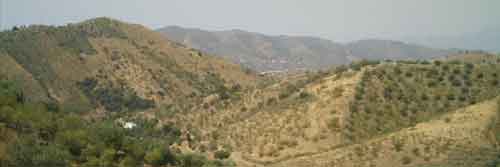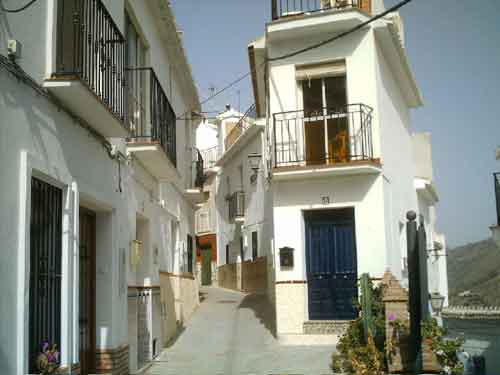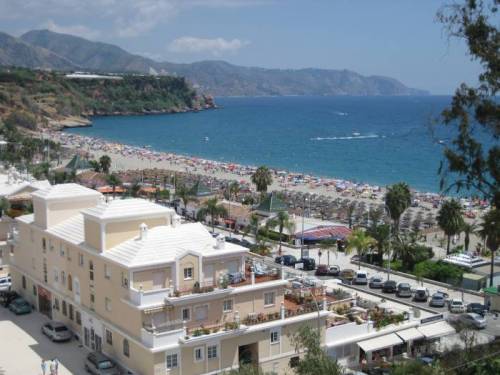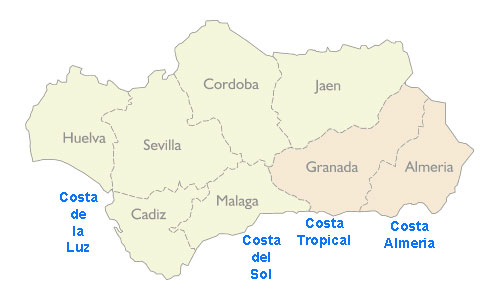
Andalucía is the southernmost of the seventeen autonomous communities of Spain and the second largest region, covering 17.2% of mainland Spain.
Vast open spaces, rolling hills, National Parks, picturesque Moorish ‘White Villages ‘ (Pueblos Blancos) nestling in the mountains and, of course, the Mediterranean coastline with the famous Costa del Sol and others.

It is an area that has captured the hearts and imaginations of writers, artists, travelers and holidaymakers for centuries, with something to offer almost everyone.

The region of Andalucía is divided into eight separate provinces.

The provinces are subdivided into districts (such as the Axarquia) and municipalities (such as Nerja). Each municipality may cover several smaller villages.
Comarca de la Axarquia – Axarquia District
The Comarca de la Axarquia is a 1,021 square kilometre district at the eastern end of Málaga province in the autonomous region of Andalucia. It stretches from the Mediterranean coast, with its numerous beach resorts, through fertile lowlands and hills sprinkled with almond trees, olive trees, grapevines and poppies up to the high Sierra de Tejeda, Almijara and Alhama mountain ranges.
Here you will find the so-called ‘white villages’, their design and appearance the influence of the Arabs of the Al Andalus. There are 31 municipalities within the Comarca de la Axarquia, with the capital in Vélez-Málaga.
Alcaucín, Alfarnate, Alfarnatejo, Algarrobo, Almáchar, Árchez, Arenas, Benamargosa, Benamocarra, El Borge, Canillas de Aceituno, Canillas de Albaida, Colmenar, Comares, Cómpeta, Cútar, Frigiliana, Iznate, Macharaviaya, Moclinejo, Nerja, Periana, Rincón de la Victoria, Riogordo, Salares, Sayalonga, Sedella, Torrox, Totalán, Vélez-Málaga, La Viñuela
The Costas
Costa de la Luz
The Costa de la Luz is the western part of the Andalucía coastline and faces the Atlantic ocean. The sand is a fine, golden colour and typical beaches are large and often characterised by sand dunes and pine trees.
This part of the coast has not seen the high-rise hotel development of other areas. The often strong Atlantic winds and waves are favoured by wind surfers and surfboarders. Stretches of cliffs and coves are found to the east near Barbate and around the Campo de Gibraltar.
The Costa de la Luz ‘Huelva Province’ stretches from the Portuguese border to the Donaña National Park and the River Guadalquivir, and the Costa de la Luz ‘Cadiz Province’ stretches form the River Guadalquivir to Tarifa at the mouth of the Mediterranean. Travel from one section to another requires a long drive via Sevilla.
Costa del Sol
The Costa del Sol stretches just over 150 kilometres either side of Málaga city in Málaga province and is one of Spain’s most popular tourist destinations. The mild climate allows for a wide variety of outdoor activities all year round.
Eastern Costa del Sol: This is a 54 km stretch of coast to the east of Malaga city which ends at Maro. The principal urban centre is Nerja.
Western Costa del Sol: This is a 100km of coastline that begins at Málaga city and stretches westward all the way to the border of Cádiz province. This part of the coast is highly developed, both in terms of property and infrastructure. Malaga International Airport, the gateway to the southern costas, is 8 km west of the city.
Costa Tropical
The Costa Tropical, Granada province, continues eastwards from where the Costa del Sol ends. Mountains run right down to the sea and the coastline is a series of coves and promontories. Towns include La Herradura, located between the two promontories of Punta de la Mona and Cerro Gordo, Almuñecar and the white village of Salobreña
Costa Almeria
The Costa Almeria is next and is very much unspoilt. To the east of Almeria is the rugged and desolate coast of the Cabo del Gato-Nijar natural park, an arid desert landscape with a very low population density. Many of the coves can only be reached on foot and the area is particularly popular with nature lovers and back-packers.
The most popular coastal village is San José. West of Almeria are the highly developed tourist resorts of Roquetas de Mar and Aqua Dulce and the old fishing port of Adra.
